Best Cities for Your Second Act
For those who\'ve hit retirement age, but aren\'t quite ready to call it quits, living in a city with quality jobs is important.
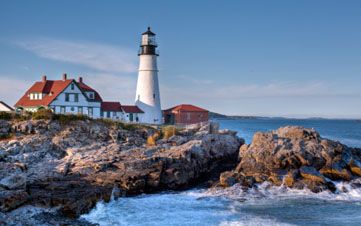
For those who\'ve hit retirement age, but aren\'t quite ready to call it quits, living in a city with quality jobs is important. In addition to employment, activities such as golf, dining out and the theater are also vital for this age group, who still feel young at heart.
To identify the Best Cities for Your Second Act, Kiplinger teamed up with Kevin Stolarick, research director at the Martin Prosperity Institute, a think tank that studies economic prosperity. All of the cities on our list have reasonable living costs, strong employment growth and a population that scores high on measures of education and tech-savviness. For second acts, we also factored in the number of golf courses as well as the number of artists and musicians.
The cost-of-living index measures how expensive it is to live in a city; the national average score is 100. That means cities with a score below 100 have a lower-than-average cost of living. Nationwide, the median household income is $43,024, and median income growth from 2006 to 2011 was 11.1%. The national unemployment rate is 8.2%.
Check out our picks, and share your thoughts in our reader comment box below.
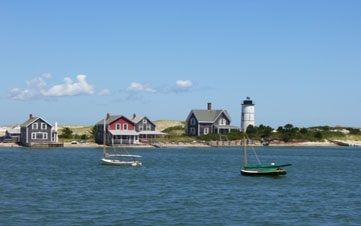
5. Barnstable Town, Mass.
Population (metro area): 215,888
Unemployment rate: 6.0%
Cost-of-living index: NA
Median household income: $60,096
Restaurants per 100,000 people: 388
Craving a quaint New England lifestyle close to a big city? Barnstable Town, 70 miles southeast of Boston on Cape Cod, is both bucolic and bustling. In Hyannis, one of seven villages that comprise Barnstable, you can visit antique shops, stay in historic inns and B&Bs along bayside beaches, and eat at restaurants serving some of New England\'s finest seafood. Nightclubs feature live music and dancing.
Check out the Hyannis Whale Watcher Cruises from May through October. The six-mile Sandy Neck Beach, a favorite location among locals, offers fishing, swimming, camping, biking and hiking, especially along salt marshes, where you can observe endangered species. Or catch a ferry from Barnstable Harbor to Nantucket and enjoy a day at one of the many beaches on the island, or explore Nantucket\'s famed Brandt Point Lighthouse or Whaling Museum.
Housing is expensive here -- the median price is just below $300,000, compared to the national average of $158,000. A 2,200-square-foot, three-bedroom, two-bathroom home in Centerville (one of seven villages that comprise Barnstable) costs $535,000.
YOUR TAKE: Share your favorite photos from around town, or tell us why you love your city.
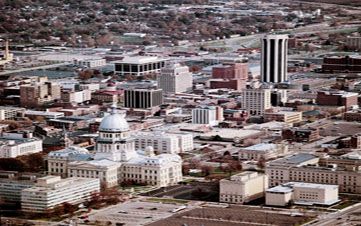
4. Springfield, Ill.
Population (metro area): 210,170
Unemployment rate: 7.1%
Cost-of-living index: 88.1
Median household income: $51,001
Restaurants per 100,000 people: 234
Illinois\'s state capital may be known to many as the home of Abraham Lincoln – scores of historic locales and museums pay tribute to America\'s famed president – but Springfield is gaining greater notoriety, especially among second act-ers, for its lively arts scene, outdoor and recreational activities, and cultural and historic landmarks.
Springfield is an artistic haven in the Midwest, thanks in part to its museums and art galleries, the Illinois Symphony Orchestra, Springfield Muni Opera and the newly restored Legacy Theatre, where you can catch an occasional Broadway musical.
Nature lovers can explore the more than 30 public parks and wildlife sanctuaries; among the highlights is eagle watching along the Illinois River. For sailing, fishing or boating, Lake Springfield is ten miles south.
YOUR TAKE: Share your favorite photos from around town, or tell us why you love your city.
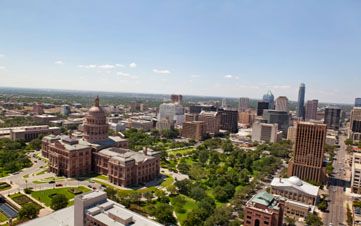
3. Austin, Tex.
Population (metro area): 1,716,289
Unemployment rate: 5.4%
Cost-of-living index: 90.6
Median household income: $57,109
Restaurants per 100,000 people: 191
Bored with the status quo? Restart your life Austin-style, with tacos at Guero\'s, haute cuisine at the Driskill Hotel, rockabilly at the Continental Club, symphonies at the Backyard, hiking and biking in the 809-acre Barton Creek Greenbelt and downtown lofts for enjoying the city life.
If you must keep working, you\'ll find opportunity in Austin for established professionals. Not only is the city looking to fill mid- to senior-level tech jobs but \"we also have lots of start-ups that need \'adult supervision,\'\" says Melissa Alvarado of the Mayor’s Office for Economic Development. The Austin area added 19,200 jobs over a recent 12-month period; professional and business services saw the most growth.
Austin\'s popularity has its downside. \"Traffic is a nightmare between 4:30 and 6:30,\" says Melanie Tipps, a freelance photographer, and housing prices are heading up, thanks to strong demand. Still, people flock to this city for at least one good reason, says Tipps. \"It never gets boring here.\"
YOUR TAKE: Share your favorite photos from around town, or tell us why you love your city.
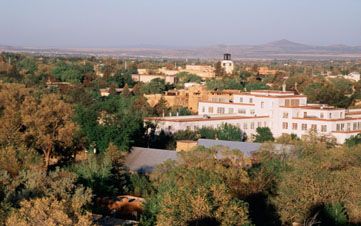
2. Santa Fe, N.M.
Population (metro area): 144,170
Unemployment rate: 4.6%
Cost-of-living index: NA
Median household income: $52,923
Restaurants per 100,000 people: 226
Santa Fe is an oasis in the Southwest desert—and not just for its climate. As the capital of New Mexico and the closest city to the Los Alamos National Laboratory, Santa Fe has long enjoyed low unemployment and an abundance of high-paying, highly skilled jobs. Research and technology employ thousands here, as do the hospitality industry, the regional medical center and the region\'s thriving arts community.
In fact, with a renowned opera and some 240 galleries, Santa Fe ranks among the largest art markets in the country. The city boasts four art districts, ranging from the high-end jewelry shops around its 400-year-old adobe plaza to the two-mile stretch of Spanish farmhouses, restaurants and galleries on Canyon Road. These amenities don\'t come cheap, and the median home price is about $210,000 above the national average. Still, the area\'s strong economy, vibrant art scene and picture-perfect scenery continue to draw tourists and transplants alike.
YOUR TAKE: Share your favorite photos from around town, or tell us why you love your city.
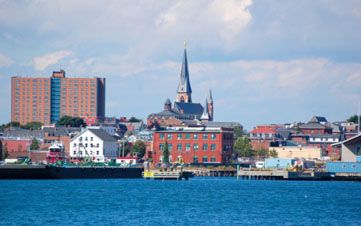
1. Portland, Maine
Population (metro area): 514,098
Unemployment rate: 6.4%
Cost-of-living index: 113.1
Median household income: $54,431
Restaurants per 100,000 people: 263
Portland\'s lively arts scene, highly skilled workforce and inventive cuisine, along with a low crime rate and high-quality medical facilities, are drawing professionals who are making their home base here and telecommuting or flying to their jobs. The cost of living is slightly higher than the national average, but compared with big-city prices, housing is affordable. Newly built two-bedroom condos on the eastern side of downtown sell for $360,000.
Downtown Portland offers boutiques, art galleries and restaurants along cobblestone streets. The arts district includes a symphony, ballet, an opera company, a theater and the Portland Museum of Art. Portland\'s renowned food scene offers everything from hardwood-cooked game to its famed steamed lobster.
Portland has its challenges. Homelessness is up (a task force is addressing the problem), and winters are long and cold. Locals either wait them out in warmer climates, head north to ski, or pop in to one of the many restaurants for a hot bowl of chowder.
YOUR TAKE: Share your favorite photos from around town, or tell us why you love your city.

More From Kiplinger
SLIDE SHOW: Best Cities for Young Adults
SLIDE SHOW: Best Cities for Mid-Career Professionals
SLIDE SHOW: Best Cities for Families
SLIDE SHOW: Best Cities for Retirees
TOOL: Find the Best City for You
Get Kiplinger Today newsletter — free
Profit and prosper with the best of Kiplinger's advice on investing, taxes, retirement, personal finance and much more. Delivered daily. Enter your email in the box and click Sign Me Up.
-
 April RMD? Five Tax Strategies to Manage Your 2025 Income
April RMD? Five Tax Strategies to Manage Your 2025 IncomeTaxable Income The April 1, 2025, deadline for required minimum distributions (RMDs) is fast approaching for retirees who turned 73 in 2024.
By Kelley R. Taylor Last updated
-
 Rising AI Demand Stokes Undersea Investments
Rising AI Demand Stokes Undersea InvestmentsThe Kiplinger Letter As demand soars for AI, there’s a need to transport huge amounts of data across oceans. Tech giants have big plans for new submarine cables, including the longest ever.
By John Miley Published
-
 What Does Medicare Not Cover? Eight Things You Should Know
What Does Medicare Not Cover? Eight Things You Should KnowHealthy Living on a Budget Medicare Part A and Part B leave gaps in your healthcare coverage. But Medicare Advantage has problems, too.
By Donna LeValley Published
-
 12 Great Places to Retire in the Midwest
12 Great Places to Retire in the MidwestPlaces to live Here are our retirement picks in the 12 midwestern states.
By Stacy Rapacon Published
-
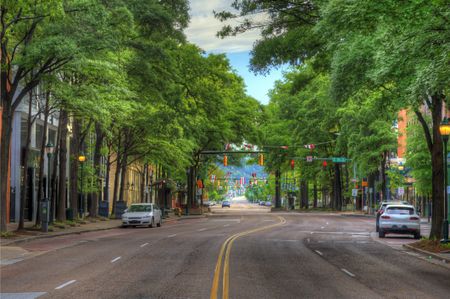 10 Cheapest Small Towns to Live In
10 Cheapest Small Towns to Live InThe cheapest small towns might not be for everyone, but their charms can make them the best places to live for plenty of folks.
By Dan Burrows Published
-
 Best Cold Weather Places to Retire
Best Cold Weather Places to RetirePlaces to live Some like it hot; others not so much. Here are the 12 best places to retire if you can't stand the heat.
By Stacy Rapacon Published
-
 15 Reasons You'll Regret an RV in Retirement
15 Reasons You'll Regret an RV in RetirementMaking Your Money Last Here's why you might regret an RV in retirement. RV-savvy retirees talk about the downsides of spending retirement in a motorhome, travel trailer, fifth wheel or other recreational vehicle.
By Bob Niedt Published
-
 The Cheapest Places To Retire in the US
The Cheapest Places To Retire in the USWhen you're trying to balance a fixed income with an enjoyable retirement, cost of living is a crucial factor to consider.
By Stacy Rapacon Published
-
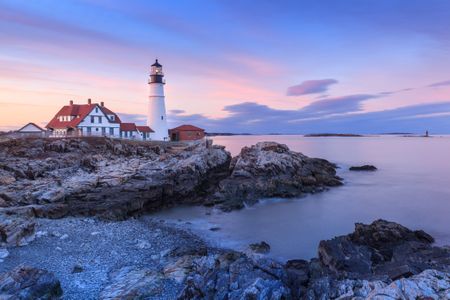 The Six Best Places to Retire in New England
The Six Best Places to Retire in New Englandplaces to live Thinking about a move to New England for retirement? Here are the best places to land for quality of life, affordability and other criteria.
By Stacy Rapacon Last updated
-
 13 Smart Estate Planning Moves
13 Smart Estate Planning Movesretirement Follow this estate planning checklist for you (and your heirs) to hold on to more of your hard-earned money.
By Janet Kidd Stewart Last updated
